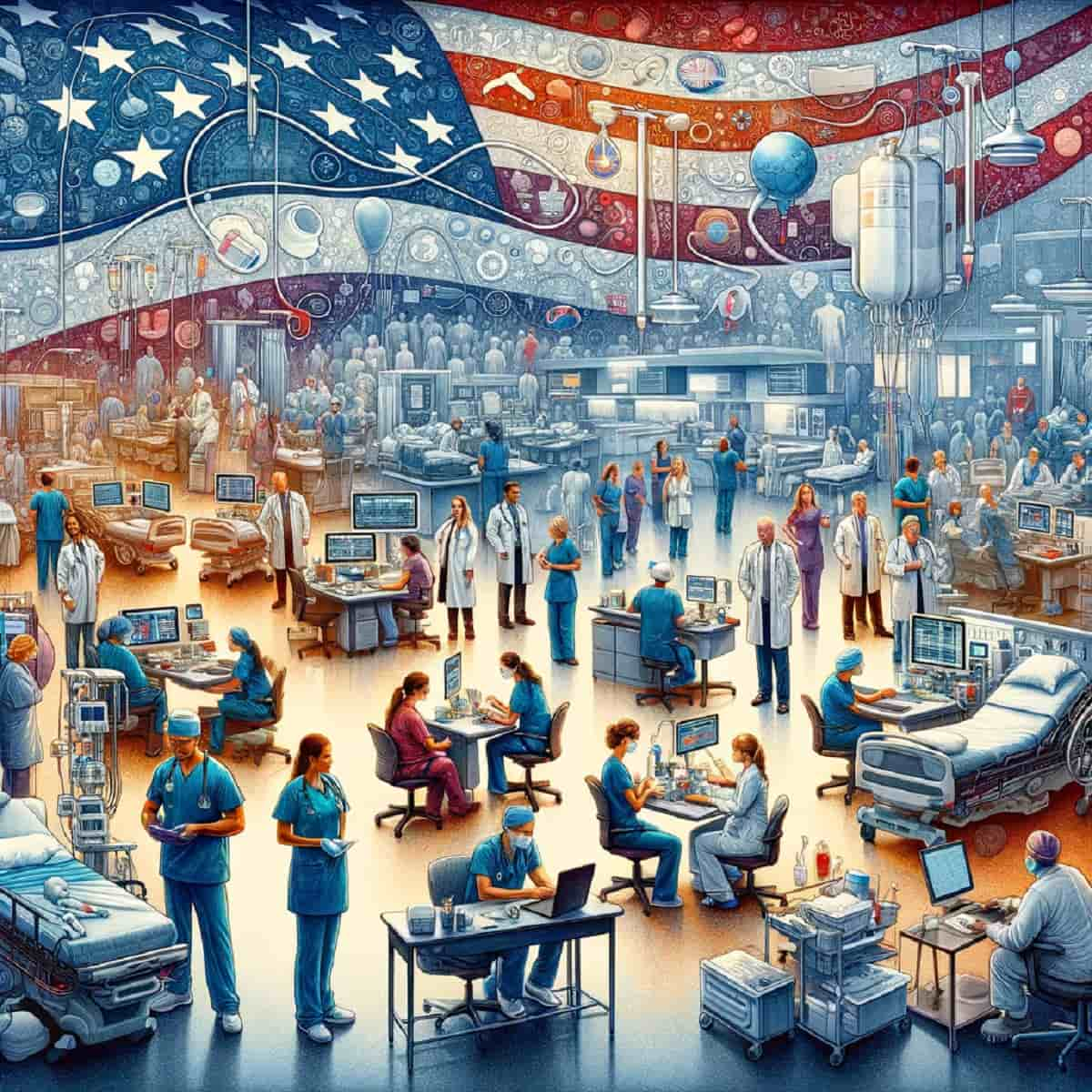The state of healthcare in the United States has been a subject of debate, scrutiny, and concern for many years. While the country boasts a robust economy and a reputation for innovation, its healthcare system often leaves citizens grappling with issues that seem incongruent with its global standing. In this article, we’ll delve into the reasons behind the challenges faced by the U.S. healthcare system, the impact on its citizens, and the factors contributing to its complexities.
1. The Healthcare Dilemma in the U.S.: A Conundrum
The United States, often hailed as a land of opportunity and progress, paradoxically struggles with a healthcare system that leaves many of its citizens in dire straits. It’s essential to understand the multifaceted nature of this dilemma, which includes:
- Access to Care: For many Americans, access to healthcare is a privilege linked to employment. Losing a job often means losing healthcare coverage, potentially leading to dire consequences for those with chronic illnesses.
- Marriage and Disability: A peculiar predicament arises for those on disability benefits who want to marry. They are often faced with an agonizing choice: healthcare or marriage.
- Job Changes Disrupt Care: Changing jobs can disrupt an individual’s continuity of care. New employers may offer different insurance plans, necessitating changes in doctors and treatment regimens.
- Financial Catastrophe: An unexpected accident or serious illness can result in astronomical medical bills, pushing individuals and families to the brink of bankruptcy.
2. The Root of the Problem: Profit over Patients
One of the fundamental issues plaguing the U.S. healthcare system is the prioritization of profit over patients. Here are some key aspects to consider:
- Commercialization of Care: Healthcare in the United States has been heavily commercialized. From medical schools to doctors, hospitals, insurers, and medical supply companies, profit margins are a driving force.
- Coverage Tied to Employment: The linkage between healthcare coverage and employment is a uniquely American phenomenon. This means that losing a job can also mean losing access to medical care.
- Disproportionate Costs: Healthcare costs in the United States are disproportionately high compared to other developed countries. This financial burden can be overwhelming for many citizens.
- Greed and Lack of Accountability: Critics argue that greed, laziness, and a lack of accountability often overshadow the well-being of patients. This perception can erode trust in the healthcare system.
3. The Role of Propaganda and Public Perception
Public perception plays a significant role in perpetuating the challenges within the U.S. healthcare system. Some key points to consider include:
- Propaganda and Misconceptions: Misinformation and propaganda have contributed to the belief that the U.S. system is the best possible healthcare system. This perception can hinder efforts to reform the system.
- Political Polarization: The healthcare debate is often polarized along political lines. The mere mention of healthcare reforms sometimes triggers accusations of socialism or communism, leading to stalemates.
- Influence of Lobbying: Lobbying by healthcare-related industries can shape public opinion and policy decisions. The interests of these industries may not always align with those of patients.
4. Political Factors and Influence
The U.S. healthcare system is not immune to political influences, which can complicate efforts to address its challenges. Key factors include:
- Politicians and Campaign Financing: Some argue that politicians, who receive campaign contributions from healthcare-related industries, may be less inclined to support reforms that threaten those interests.
- Oligarchic Tendencies: Critics contend that the United States operates more as an oligarchy than a democracy, where a small, wealthy elite can exert significant influence over policymaking.
5. A Global Perspective: Comparing Costs and Coverage
It’s instructive to consider the U.S. healthcare system in the context of global healthcare. Here’s a brief comparison with Germany, highlighting differences in costs and coverage:
| Aspect | United States | Germany |
|---|---|---|
| Taxation | Lower tax rates (e.g., ~25%) | Higher tax rates (e.g., ~42%) |
| Access to Care | Linked to employment, limited without insurance | Universal healthcare system, accessible to all |
| Cost of Insurance | Expensive, often linked to employment | Socialized healthcare with universal coverage |
| Coverage for the Poor | Limited (e.g., Obamacare) | Comprehensive coverage for low-income citizens |
Note: Figures are approximate and subject to change.
The comparison highlights the different approaches to healthcare financing and access in the United States and Germany. While the U.S. has lower tax rates, access to care is often linked to employment, and comprehensive coverage for low-income citizens can be limited. In contrast, Germany employs a socialized healthcare system with universal coverage, funded through higher tax rates.
6. The Way Forward: Seeking Solutions
Addressing the challenges within the U.S. healthcare system requires a multi-pronged approach. Some potential solutions and areas of focus include:
- Reform and Regulation: Implementing regulations and reforms that prioritize patients over profits can help rectify the healthcare imbalance.
- Universal Access: Exploring options for universal access to healthcare, regardless of employment status, can provide greater security for citizens.
- Reducing Administrative Costs: Streamlining administrative costs and reducing bureaucracy within the healthcare system can help lower overall expenses.
- Transparency and Accountability: Ensuring transparency in medical pricing and holding healthcare providers accountable for quality of care can empower patients.
- Public Awareness: Increasing public awareness about the complexities of the healthcare system and the need for reform can drive informed discussions and change.
7. A Collective Responsibility: Advocating for Change
While the U.S. healthcare system faces considerable challenges, it’s crucial to remember that change is possible through collective efforts. Advocacy, awareness, and informed discourse can play pivotal roles in shaping the future of healthcare in the United States.
It is a system where profit often takes precedence over patients, leaving many individuals and families struggling to access and afford the care they need. While discussions around healthcare reform are ongoing, the path to change is complex and multifaceted.
In the quest for a healthcare system that better serves the needs of its citizens, understanding the root causes, political influences, and international comparisons can provide valuable insights. Ultimately, the goal is to ensure that healthcare is a fundamental right, accessible to all, rather than a privilege linked to employment or income.













